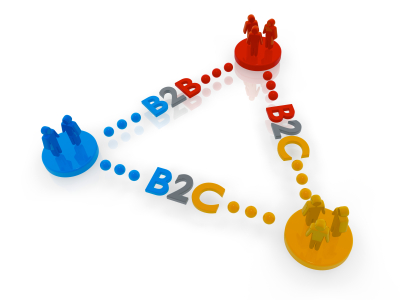Consolidating B2B & B2C eCommerce Operations

Recently we’ve had some conversations with various manufacturers around consolidating their B2B and B2C eCommerce operations. With the growing demand for B2C-like B2B eCommerce experiences, there is the challenge of running operations efficiently with multiple systems. A multichannel eCommerce management system that connects your ERP system, vendors, shopping carts and marketplaces to synchronize your orders, customers, products, and inventory data can give your sales team, warehouse managers, and eCommerce managers a consolidated view of all B2B and B2C operations.
Below are some of the common pain points we have uncovered:
- Delivering personal touches on B2B sites (i.e. Special pricing, credit control options, buying options, and order histories)
- Delivering speed and simplicity to B2B customers
- Integrating B2C & B2B site transactions with ERP systems in real time
- Receiving and processing purchase orders in real time
- Channel conflicts between B2B sales force and eCommerce platforms
- Accessing inventory and order data easily for B2B and B2C
- Creating accurate reports- cost data may be located in ERP system and sales data may be located in a shopping cart or another system used by sales force
As B2C and B2B are becoming equally focused on building long-term, loyal relationships, the information retrieved from every customer touch point is vital to understanding and communicating with your customers.
With a system that keeps your data updated, accurate, and easily accessible from one place, reporting is simple and does not require manually seeking information from other systems to determine stock levels, sales and profit reports, or to consolidate customer order history.
B2B & B2C retailers who use a central system that sits between all of their back-end and front-end operations are relieved from inefficient manual processes. When a data feed is built, you are able to automate critical tasks to integrate sources of data associated with sending and receiving purchase orders, invoices and payments.
For some retailers, they are able to reduce steps in their order flow because they no longer have to convert orders into an ERP compatible format – instead the transaction is immediately pulled from the shopping cart, processed in one system, and communicated to the warehouse for fulfillment.
Because many of the features that are typical for a B2C site are now expected on B2B sites, B2B retailers must customize pricing, attributes, and buying options (buying in bulk/recurring purchases) on all of their online channels. Flexible eCommerce software that leverages your existing shopping cart to simplify product publishing for B2B and centralize inventory and order visibility allows your team to re-allocate time and resources towards meeting growing customer expectations for a connected, continuous omnichannel shopping experience.
If you are using a number of different tools to run your B2B and B2C eCommerce operations, look at ways to consolidate various systems and technologies. If you would like us to take a look at your existing process, give us a ring or contact us and we’ll show you where you can reduce operating costs and become more efficient!
